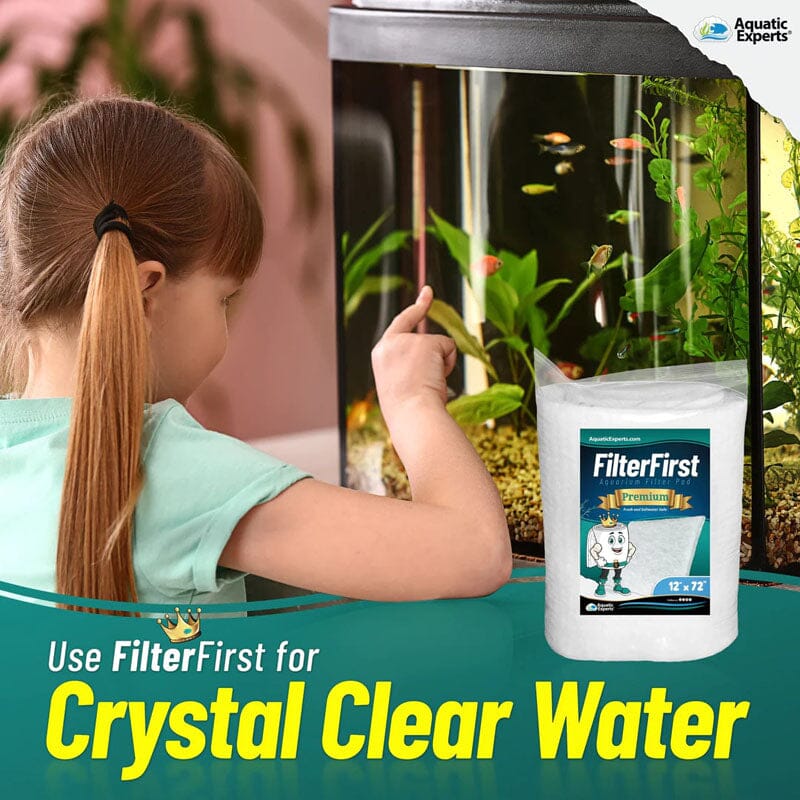Before we delve into the world of aquarium filters, let's talk about why they are essential. Aquarium filters are integral to the health and wellness of your tank's fish and other aquatic life. They ensure the water remains clean, well-oxygenated, and free of harmful chemicals.
If you're an aquarist, whether a novice or an expert, this guide to aquarium filters will help you understand the different types and select the right one for your setup.
Understanding the Importance of Aquarium Filters
Aquarium filters are crucial to maintaining the ideal environment for your fish. A proper filtration system helps to remove excess food, decaying organic matter, free-floating particulates, and harmful chemicals from the water, ensuring a safe and healthy environment for your aquatic pets (source).
Dive into the Types of Aquarium Filters
Mechanical Filters
Mechanical filters work by trapping physical particles and residue from the aquarium water. They use media such as foam, floss, or sponges that physically catch and hold debris. Sponge filters and hang-on-back filters are popular examples of mechanical filters. However, cleaning or replacing the filter media regularly is crucial to prevent the trapped debris from polluting the water (source).
Chemical Filters
Chemical filtration involves using media like activated carbon, resins, or chemical removers to eliminate harmful substances from the water. These filters work by adsorbing dissolved wastes and unwanted chemicals, improving the water's clarity and removing odors. Different media target specific pollutants, so ensure you use the right one for your needs.
Biological Filters
Biological filters utilize beneficial bacteria to break down harmful ammonia and nitrites produced by fish waste and uneaten food into less harmful nitrates. These filters use bio-media, such as ceramic rings or bio-balls, providing ample surface area for these bacteria to colonize.

Popular Types of Aquarium Filters and Their Functions
Sponge Filters
Sponge filters, often used in freshwater aquariums and breeding tanks, provide excellent biological and mechanical filtration. They draw water through a porous sponge, trapping debris and providing a home for beneficial bacteria (source).
Canister Filters
Canister filters, ideal for larger aquariums, offer all three filtration types: mechanical, biological, and chemical. They feature a large canister that holds various filter media and pushes the water through under pressure, ensuring thorough filtration.
Hang-on-Back Filters
Hang-on-Back (HOB) filters are common for small to medium aquariums. They are convenient, easy to install, and provide excellent mechanical and chemical filtration, with some biological filtration capacity (source).
Undergravel Filters
Undergravel filters, while somewhat out of fashion, provide excellent biological filtration by turning the entire substrate of your tank into a massive biological filter.
Internal Filters
Internal filters are submerged inside the tank and are ideal for small aquariums or quarantine setups. They provide a combination of mechanical, biological, and sometimes chemical filtration.
Choosing the Right Aquarium Filter
When choosing a filter, consider the tank size, type and number of fish, and the amount of maintenance you're willing to do. Take time to understand the strengths and weaknesses of each filter type, and always consider expert advice and reviews (source).
Essential Filter Maintenance Tips
Regular cleaning and replacing of filter media are crucial for maintaining your filter's performance. Additionally, when cleaning a biological filter, avoid tap water as it can kill the beneficial bacteria in the bio-media. Instead, use some water from the tank itself (source).
Frequently Asked Questions
What's the best type of filter for a beginner?
A Hang-on-Back or an internal filter can be a great start for beginners due to their ease of installation and maintenance.
How often should I replace the filter media?
The frequency of replacing filter media depends on its type. For instance, mechanical media like foam or floss should be cleaned or replaced every 2-4 weeks, while biological media typically never need replacing unless they physically break down.
Can I use multiple filters in my aquarium?
Yes, multiple filters can provide backup, increase filtration capacity, and create more diverse water flow patterns, benefiting much fish and planted aquariums.
Can I over-filter my aquarium?
While you can't really over-filter an aquarium, very strong water flow or current can be stressful for certain fish species. It's essential to match your filtration system to your tank's inhabitants.
How do I know if my aquarium filter works properly?
If your filter works correctly, the water should be clear, without any unpleasant odors. Regular testing for ammonia and nitrite can also indicate if your biological filtration is functioning well.
With a good understanding of aquarium filters, you can make informed decisions to maintain a healthy and thriving environment for your aquatic life. Happy fish keeping!





